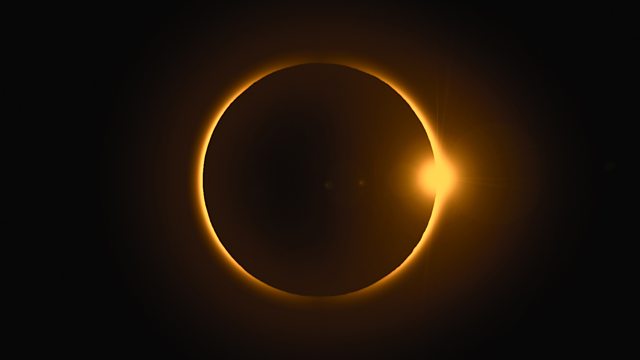Darkness at Noon
We examine the mythology and psychology behind solar eclipses which have inspired dread and awe since antiquity.
Eclipses have inspired dread and awe since antiquity. The earliest Chinese mythology saw solar eclipses as dragons eating the sun. We speak to native American astronomer Nancy Maryboy who tells us about the Navajo and Cherokee beliefs, many of which are still held today.
We visit Stonehenge to examine theories that the ancient Aubrey holes, burial pits on the outer edge of the monument, were used to predict eclipses. The saros – the cycle of eclipses- has been used since the time of the Babylonian to predict eclipses. We hear how Christopher Columbus used prior knowledge of an eclipse to save his shipwrecked crew. The ability to predict eclipse has been used as a literary device over the centuries, in anything from Rider Haggard to Herje's Tintin adventures.
Darkness at Noon meets eclipse chasers, that strange community of people from whom no expenses is too great or distance too far to satisfy their fascination with a total solar eclipse of the sun. We meet the psychologist Dr Kate Russo who has studied her own and others obsession with eclipses to examine the reactions so many people report. The euphoria peoples experience is, she says caused by the release of the neurotransmitter dopamine but she suggests intriguingly that people who witness eclipses exhibit similar symptoms to those of patients with trauma.
Join Frank Close as he prepares to take his own grandsons to see their very first eclipse and experience their very first 'Darkness at Noon".
(Photo:Digitally-generated image of solar eclipse. Credit: Getty Images)
Last on
More episodes
Previous
Broadcasts
- Sun 20 Aug 2017 08:32GMT91�ȱ� World Service Australasia, East Asia & South Asia only
- Sun 20 Aug 2017 18:32GMT91�ȱ� World Service except Australasia, East Asia, News Internet & South Asia

